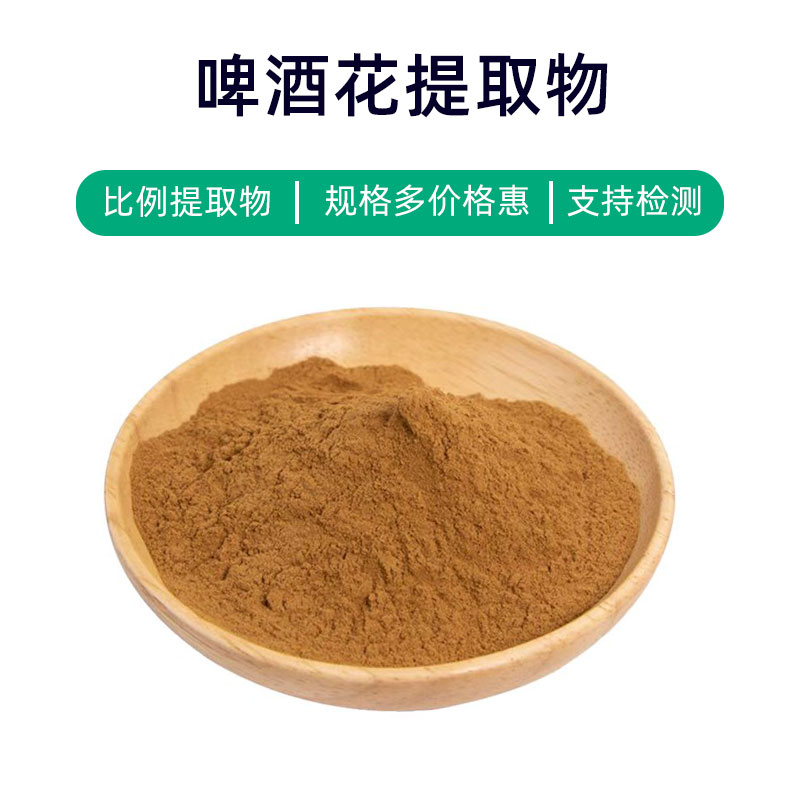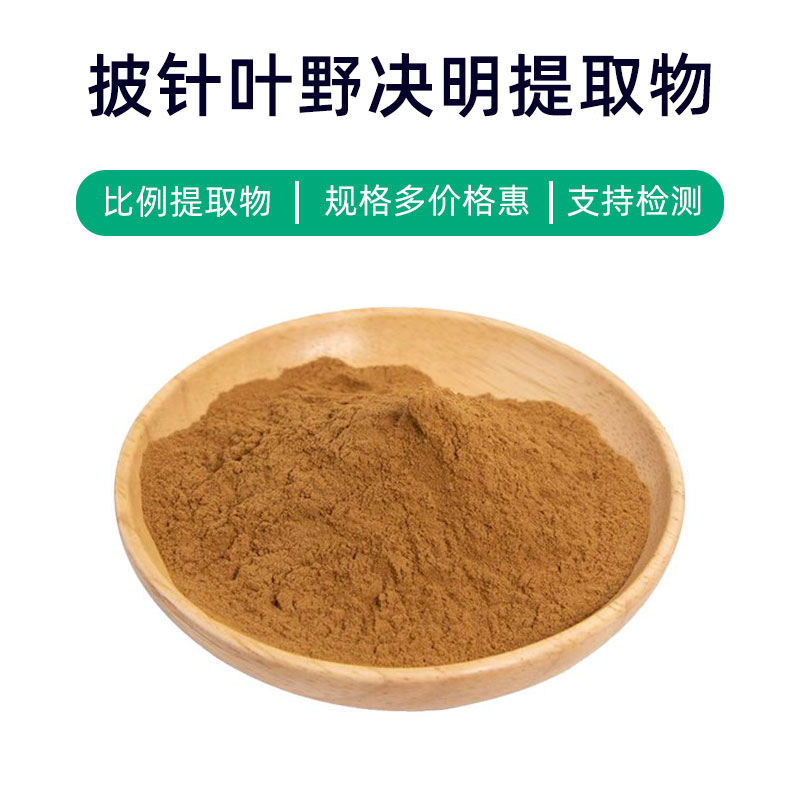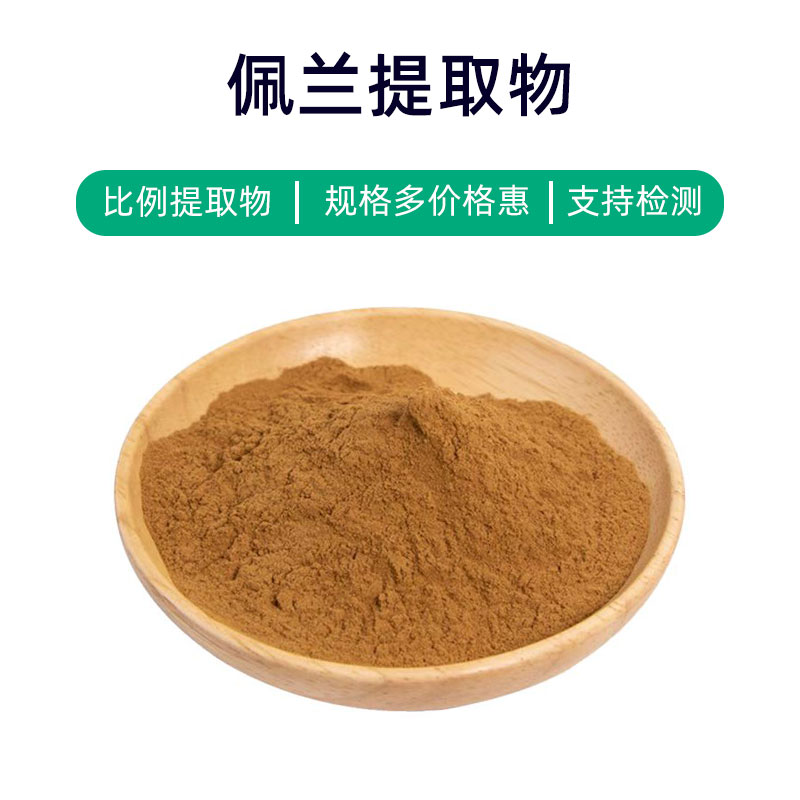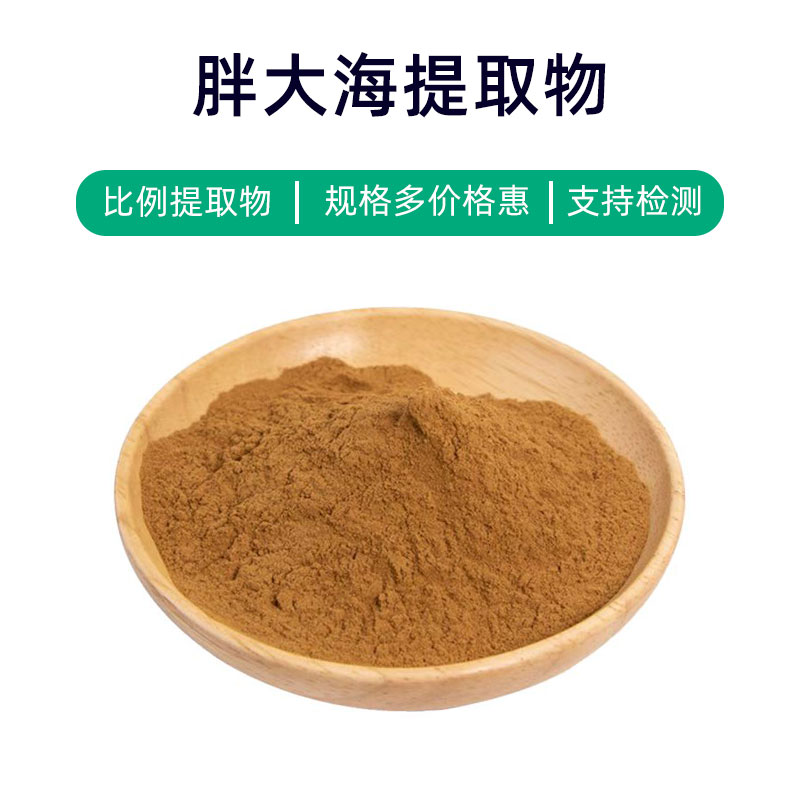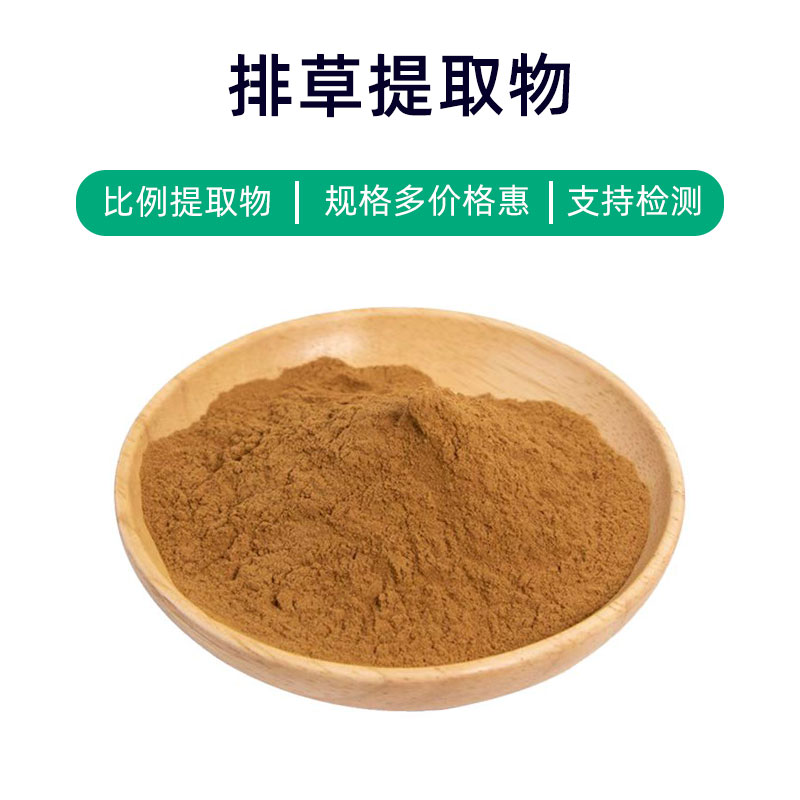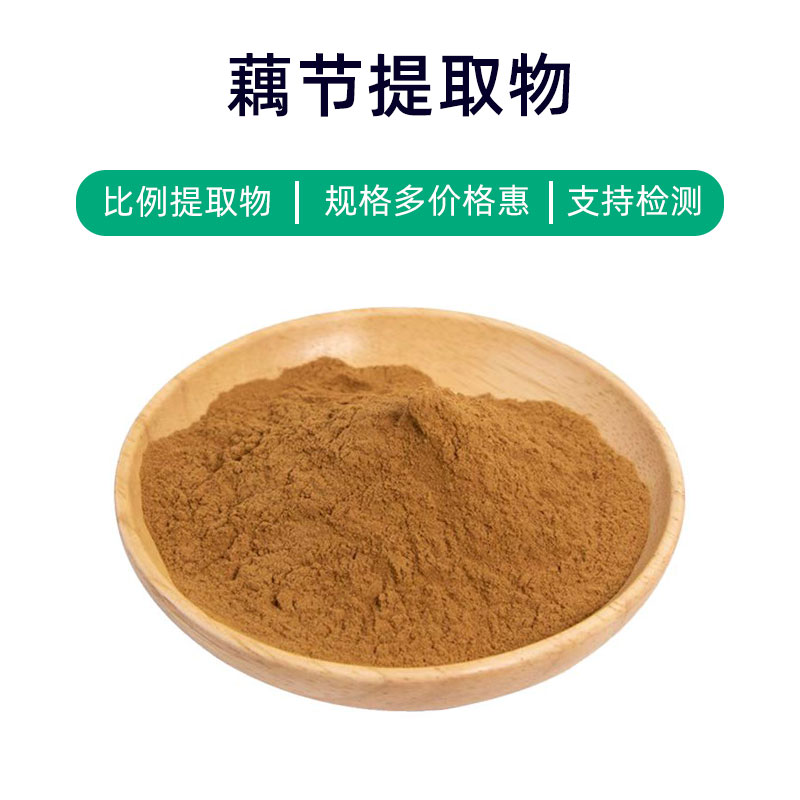Product Introduction of Wormwood Extract
Wormwood extract is a plant-based ingredient derived from the wormwood plant (Artemisia absinthium), primarily containing artemisinin, volatile oils, and flavonoids. These components provide various benefits and applications for the extract.
Firstly, wormwood extract has significant medicinal value in the medical field. Artemisinin, one of its main components, exhibits anti-inflammatory, antibacterial, and antioxidant effects, making it commonly used in traditional medicine formulations or herbal preparations to treat symptoms like indigestion and gastrointestinal discomfort.
Secondly, wormwood extract is widely used in health supplements. It is believed to promote digestive health, assist in food digestion, and alleviate stomach discomfort. Additionally, wormwood extract is also used to enhance immunity and strengthen the body's resilience.
Moreover, wormwood extract can be utilized in the food and beverage industry. It is commonly added to bitter alcoholic drinks like absinthe to enhance bitterness and adjust flavor. In food, it can serve as a spice or flavoring agent, imparting a unique taste.
Overall, wormwood extract, as a natural plant extract, offers various benefits and applications across the fields of medicine, health supplements, food, and beverages.
Production Process of Wormwood Extract
The production process of wormwood extract typically includes the following steps:
- Raw Material Preparation: Fresh wormwood plants are selected as extraction materials. While various parts of the plant contain artemisinin and other effective components, the leaves and flowering heads are usually the primary extraction targets.
- Crushing and Grinding: The harvested wormwood plants are washed and crushed to facilitate the extraction of effective components. Generally, a grinder or mill is used to increase surface area, benefiting subsequent extraction processes.
- Extraction Process: The crushed wormwood is extracted with an appropriate solvent (such as ethanol or water) through soaking or distillation. Under specific temperature and time conditions, the solvent effectively extracts effective components like artemisinin and volatile oils.
- Solvent Recovery: After extraction, solvent recovery is necessary. Distillation or other physical methods are used to evaporate the solvent from the extract for further processing and utilization.
- Concentration and Refinement: The extracted liquid after solvent recovery is concentrated and refined to remove impurities and unwanted components, yielding a pure wormwood extract.
- Drying and Packaging: Finally, the refined wormwood extract is dried to meet moisture content standards and packaged. Common methods include spray drying or vacuum drying, producing powder or granule forms, and then sealed to ensure product quality and stability.
In summary, the production of wormwood extract involves critical steps such as raw material preparation, crushing, extraction, solvent recovery, concentration and refinement, drying, and packaging, with stringent control required at each stage to ensure the quality and safety of the extract.
Effects and Side Effects of Wormwood Extract
Wormwood extract, derived from the wormwood plant, possesses various therapeutic benefits. Below are its main effects:
- Anti-inflammatory and Antibacterial: The extract is rich in volatile oils and artemisinin, exhibiting strong antibacterial and anti-inflammatory properties, making it useful for treating diseases caused by bacterial infections.
- Antiparasitic: Wormwood extract can effectively expel and kill various parasitic worms, particularly intestinal parasites like hookworm and roundworm, serving as a treatment for worm infestations.
- Digestive Aid: Wormwood extract stimulates digestive secretions, increasing gastric juice and bile production, which helps alleviate indigestion and gastrointestinal discomfort.
- Fatigue Resistance: Rich in vitamins and minerals, wormwood extract enhances immunity and resistance to fatigue, helping to boost the body’s resilience under stress.
- Heat Cleansing and Detoxifying: The extract features properties that can cool the body and detoxify, useful for treating conditions like heat stroke, febrile diseases, and eczema, aiding in lowering body temperature and eliminating toxins.
- Circulation Support: Wormwood extract promotes blood circulation, aiding in blood flow, which can assist in the treatment of conditions like rheumatoid arthritis and bruises.
- Antioxidant: The extract contains a significant amount of polyphenolic compounds, exhibiting strong antioxidant properties that help eliminate free radicals, delay cellular aging, and support cardiovascular health.
- Menstrual Regulation: Wormwood extract can help regulate menstrual irregularities and pain, alleviating menstrual symptoms and promoting blood circulation to ease discomfort.
Despite its multiple benefits, it's essential to use wormwood extract cautiously to avoid adverse reactions from excessive consumption. Some individuals might be allergic to artemisinin, and prolonged or excessive use can lead to toxicity symptoms like nausea, vomiting, and headaches. Therefore, it should be used under the guidance of a physician or pharmacist to monitor responses for safe use.
Applications and Dosage of Wormwood Extract
Wormwood extract has extensive applications in the fields of medicine, food, and cosmetics, with the following focus on usage and dosage in these areas:
- Medical Application:
- Uses: Wormwood extract is commonly used in traditional Chinese medicine as an ingredient with antibacterial, anti-inflammatory, and antiparasitic properties for treating intestinal worm infections, indigestion, and fever.
- Dosage: Typically, it is made into oral liquids, capsules, or granules; adults generally consume 5-10 milliliters per dose, with children advised to reduce the amount, taken 2-3 times a day, under medical advice.
- Food Application:
- Uses: As a food additive, wormwood extract imparts bitterness to products and is also included in health foods for its detoxifying and digestive benefits.
- Dosage: Commonly used in the production of absinthe, wormwood tea, with a typical dosage of 1-5 grams of wormwood extract per 1000 grams of food.
- Cosmetic Application:
- Uses: The extract’s rich active components provide antioxidant, anti-inflammatory, and antibacterial effects, commonly used in skincare products to enhance skin condition and soothe discomfort.
- Dosage: Used in masks, cleansers, and lotions, with a typical dosage of around 1-5% of the total product formulation.
- Precautions:
- It is crucial to follow medical or pharmacist advice when using wormwood extract, avoiding long-term or excessive use to prevent adverse effects.
- Special populations (such as pregnant or nursing women, and children) should avoid using wormwood extract or only use it under medical guidance.
- Ensure compliance with national standards and regulations when utilizing wormwood extract in food and cosmetics to avoid exceeding limits or adding toxic ingredients.
Overall, wormwood extract, with its diverse benefits, has extensive future applications in medicine, food, and cosmetics. However, attention must be paid to appropriate dosages and methods of use to ensure safety and effectiveness.
Introduction to the Source Plant of Wormwood Extract: Distribution and Growing Environment
Wormwood (Scientific Name: Artemisia argyi) is a perennial herbaceous plant belonging to the Asteraceae family, also known as mugwort. Below is information about the source plant of wormwood extract, its distribution, and growing environment:
- Plant Description:
- Wormwood is a common medicinal plant characterized by its gray-green elongated leaves, which have numerous small oil spots on the surface, and a distinctive bitter taste and aroma.
- The plant typically grows to about 1 meter tall, has a developed root system, with leaves arranged in a feathery pattern, and cone-shaped flower heads that are usually yellow or green.
- Distribution:
- Native to China, wormwood is primarily distributed across various regions, including Northern, Southern, Eastern, and Southwestern China.
- Outside of China, it also grows in other parts of Asia, including Japan and Korea, as well as in Europe and North America.
- Growing Environment:
- Wormwood thrives in warm and humid environments and is not particularly demanding in terms of soil but prefers well-drained, loose soils.
- Typically grows at altitudes below 2000 meters on hillsides, field ridges, road sides, wastelands, or the edges of cultivated land, favoring sunny conditions.
- Growth Characteristics:
- Wormwood has a long growth cycle, is drought-resistant, cold-resistant, and salt-alkali resistant; it grows rapidly in suitable environments.
- As a wild plant, it has strong growth and reproductive capabilities, typically reproducing naturally in the wild.
- Cultivation and Harvesting:
- Wormwood can be propagated by seeding or division and can also be collected from the wild.
- Harvesting typically occurs when the plants are robust, using roots or above-ground parts, which are then processed to produce wormwood extract.
In summary, wormwood is a plant with medicinal value, widely distributed in China and other regions. It prefers warm, humid environments, grows vigorously, and can be harvested to create wormwood extract for use in pharmaceuticals, food, and cosmetics.
Processing and Storage of Wormwood Extract
Processing of wormwood extract typically includes the following steps: first, harvesting the wormwood plants, followed by washing and drying the collected plants, and then crushing or chopping them into suitable particle sizes. Subsequently, an appropriate solvent (such as ethanol or water) is used for extraction, with common methods including soaking, concentration, and filtration. Finally, the resulting liquid is concentrated and dried to produce the wormwood extract.
Regarding storage, wormwood extract should be kept in a cool, dry, and ventilated area, avoiding direct sunlight. It is best stored in sealed containers to prevent moisture and contaminants. Additionally, it should be kept away from toxic substances to ensure purity and quality. If not used for an extended period, consider placing the extract in a refrigerator or freezer to extend its shelf life.
Monica Sun is a seasoned expert in the plant extraction industry with over a decade of experience in research and production. She specializes in the extraction and purification of plant active ingredients, focusing on driving innovation in natural product applications. Monica has participated in the development of multiple functional plant extracts, delivering high-value natural raw material solutions for the health food, pharmaceutical, and dietary supplement sectors.









